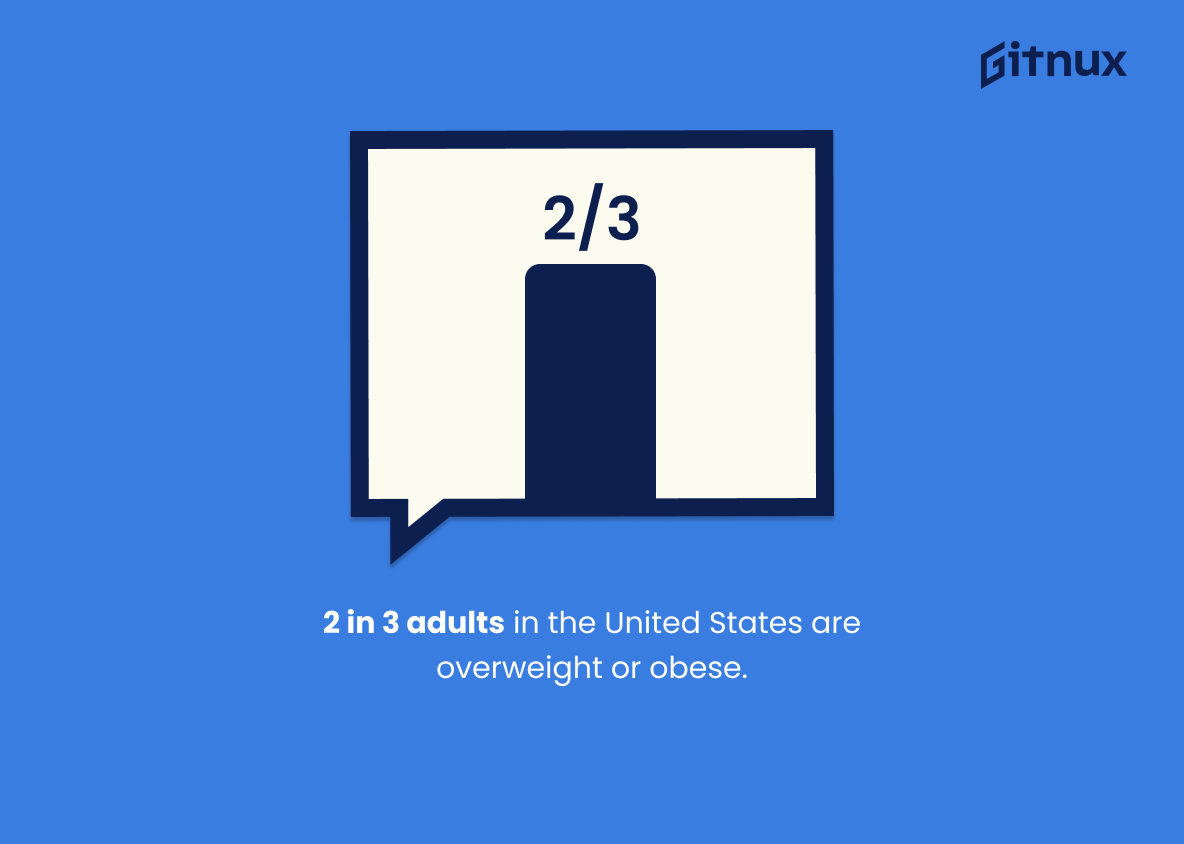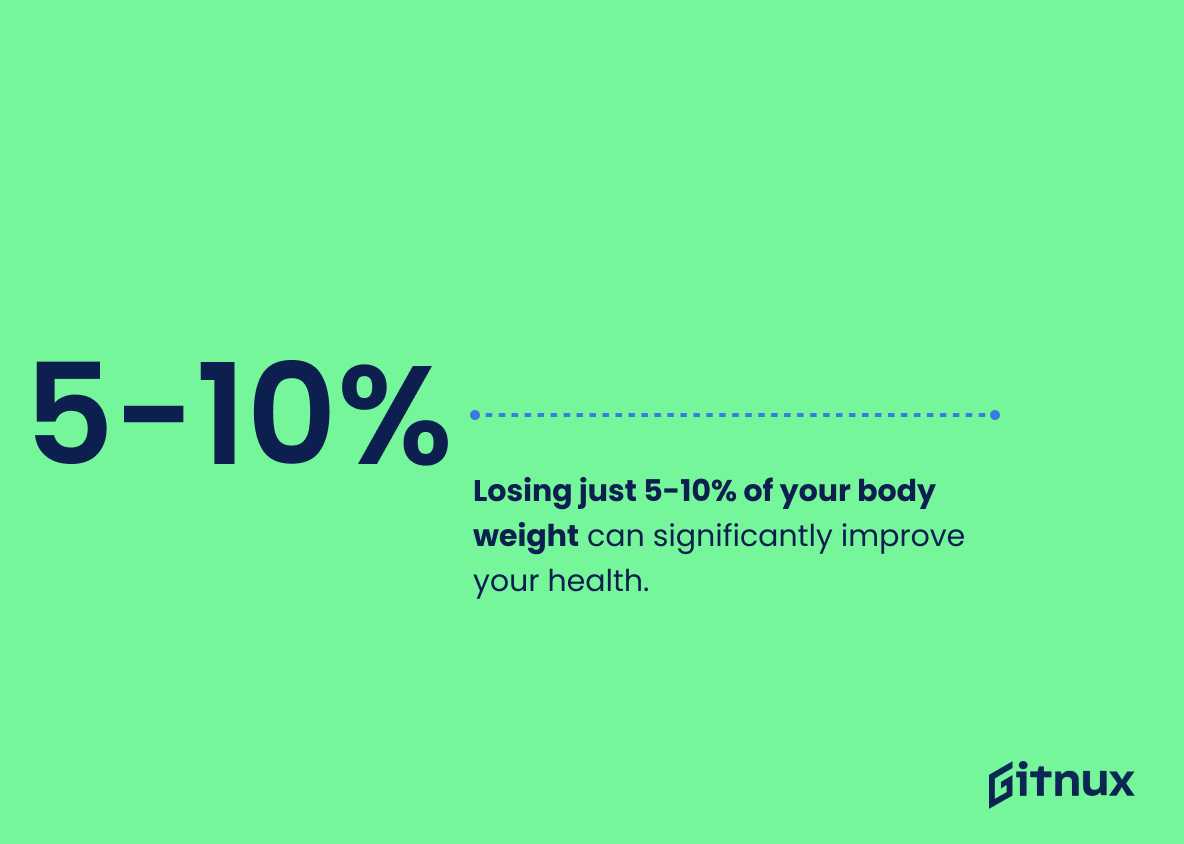Weight loss is a common goal for many people, but it can be difficult to achieve. The statistics below provide insight into the prevalence of weight loss efforts in America and around the world, as well as how successful those attempts are likely to be. Approximately 45 million Americans go on a diet each year, while the global weight loss market is valued at over $252 billion in 2021. On average, individuals spend between $3,000-$5,000 per year on their weight-loss program; however this cost may vary depending upon individual needs and goals. Unfortunately only half of all people who start a weight-loss program will remain committed after six months have passed – though with dedication even small amounts of progress (such as losing 5-10% bodyweight) can lead to significant health improvements. In addition 2 out 3 adults in America are overweight or obese according to recent data from CDC’s National Center for Health Statistics – making it clear that there’s still much work left to do when it comes improving our nation’s overall health through better nutrition and exercise habits. U.S consumers spent approximately $33.9 billion on products related to dieting and fitness last year alone – showing just how popular these activities have become among American citizens looking for ways improve their physical wellbeing without breaking the bank. Furthermore research has shown that using mobile apps during your journey towards healthier lifestyle choices could increase success rates by up 88%, while following diets such as Mediterranean Diet were ranked best overall diets for long term results by experts across multiple fields including medicine & nutrition science alike. Finally although surgery remains an option available some patients seeking more drastic changes within shorter time frames – studies suggest that most regain 50% lost bodyweight within two years post procedure due lack proper maintenance plan being put place afterwards.
Weight Loss Statistics Overview
The average annual cost of a weight loss program is around $3,000-$5,000.
This statistic is a stark reminder of the financial burden associated with weight loss programs. It highlights the fact that losing weight can be an expensive endeavor, and that those looking to shed pounds may need to invest a significant amount of money in order to do so.
2 in 3 adults in the United States are overweight or obese.
This statistic is a stark reminder of the prevalence of overweight and obesity in the United States. It serves as a call to action for individuals to take control of their health and make lifestyle changes to reduce their risk of developing chronic diseases associated with being overweight or obese. This statistic is an important factor to consider when discussing weight loss statistics, as it highlights the need for individuals to take steps to improve their health.
Losing just 5-10% of your body weight can significantly improve your health.
This statistic is a powerful reminder of the positive impact that even a small amount of weight loss can have on one’s health. It highlights the fact that even a modest amount of weight loss can have a significant impact on overall health, making it an important statistic to consider when discussing weight loss.
More than 72% of adult Americans are either overweight or obese.
This statistic is a stark reminder of the prevalence of overweight and obesity in the United States. It serves as a call to action for individuals to take control of their health and make lifestyle changes to achieve and maintain a healthy weight. It also highlights the need for public health initiatives to address the obesity epidemic and promote healthy eating and physical activity.
Around 30% of adults in the United States report trying to lose weight at some point in the last 12 months.
This statistic is a powerful indicator of the prevalence of weight loss efforts in the United States. It speaks to the fact that a large portion of the population is actively trying to lose weight, and that weight loss is a major concern for many adults. This statistic is important to consider when discussing weight loss, as it provides insight into the scope of the issue and the potential impact of any strategies or solutions proposed.
Almost 80% of dieters try to lose weight on their own.
This statistic is a powerful reminder that the majority of people attempting to lose weight are doing so without professional help. It speaks to the importance of having access to reliable information and resources to support individuals in their weight loss journey. It also highlights the need for more education and awareness around the importance of seeking professional help when needed.
The average person will attempt a weight loss program at least 4 times per year.
This statistic is a powerful reminder of the prevalence of weight loss attempts in our society. It speaks to the fact that many people are actively trying to make changes to their lifestyle and health, and that weight loss is a common goal. This statistic can be used to emphasize the importance of having a comprehensive and sustainable approach to weight loss, as well as the need for support and guidance when embarking on a weight loss journey.
88% of people who use mobile apps for weight loss report more success than those who don’t.
This statistic is a powerful indicator of the effectiveness of mobile apps for weight loss. It suggests that those who use mobile apps to support their weight loss journey are more likely to achieve their goals than those who don’t. This is an important point to consider when discussing weight loss statistics, as it highlights the potential of mobile apps to help people reach their desired weight.
Approximately 30% of people who lose weight regain it within one year.
This statistic is a powerful reminder that weight loss is not a one-time event, but rather a long-term commitment. It highlights the importance of developing healthy habits and lifestyle changes that can be sustained over time in order to maintain a healthy weight. This statistic is a valuable insight for anyone looking to make a lasting change in their weight and health.
About 49% of U.S. adults make a serious attempt to lose weight each year.
This statistic is a powerful reminder of the prevalence of weight loss attempts in the United States. It speaks to the fact that nearly half of all adults in the country are actively trying to shed pounds, highlighting the importance of weight loss in our society. It also serves as a reminder that weight loss is a common goal, and that there are many people out there who are striving to reach it.
The Mediterranean diet was ranked the best overall diet for weight loss in 2021.
This statistic is significant for anyone looking to lose weight in 2021, as it highlights the Mediterranean diet as a viable option for achieving their goals. It is a testament to the effectiveness of this diet, and serves as a reminder that healthy eating habits can be a powerful tool in the pursuit of weight loss.
Weight loss surgery has a success rate of 85% for long-term weight maintenance.
This statistic is a testament to the efficacy of weight loss surgery in helping individuals maintain their weight loss in the long-term. It is an important statistic to consider when researching the potential benefits of weight loss surgery, and can be a powerful motivator for those looking to make a lasting change in their lifestyle.
On average, men lose weight faster than women due to higher muscle mass.
This statistic is an important factor to consider when discussing weight loss, as it highlights the differences between men and women in terms of how quickly they can lose weight. It is important to note that men have a higher muscle mass than women, which can help them to burn more calories and lose weight faster. This information can be used to inform readers of the blog post about the different approaches to weight loss that may be more effective for men and women.
People tend to gain back 50% of the weight they lost within two years after completing a weight loss program.
This statistic is a powerful reminder that weight loss is a long-term commitment. It highlights the importance of maintaining a healthy lifestyle even after completing a weight loss program, as the results of the program can quickly be reversed if the individual does not continue to make healthy choices. This statistic is a valuable insight for anyone considering a weight loss program, as it emphasizes the need for dedication and consistency in order to achieve lasting results.
Conclusion
Weight loss is a complex issue that affects millions of people around the world. The statistics presented in this blog post demonstrate just how widespread and costly weight-related issues are, as well as the challenges associated with successful long-term weight management. From dieting to exercise to surgery, there are many options available for those looking to lose or maintain their weight. However, it’s important to remember that no single approach works for everyone; finding an effective strategy requires careful consideration and dedication on behalf of each individual.
References
0. – https://www.yourbariatricsurgeryguide.com
1. – https://www.healthline.com
2. – https://www.statisticbrain.com
3. – https://www.amjmed.com
4. – https://www.diabetes.org
5. – https://www.ncbi.nlm.nih.gov
6. – https://www.everydayhealth.com
7. – https://www.niddk.nih.gov
8. – https://www.todaysdietitian.com
9. – https://www.stateofobesity.org
10. – https://www.cdc.gov
11. – https://www.mercer.com
12. – https://www.marketdataenterprises.com














